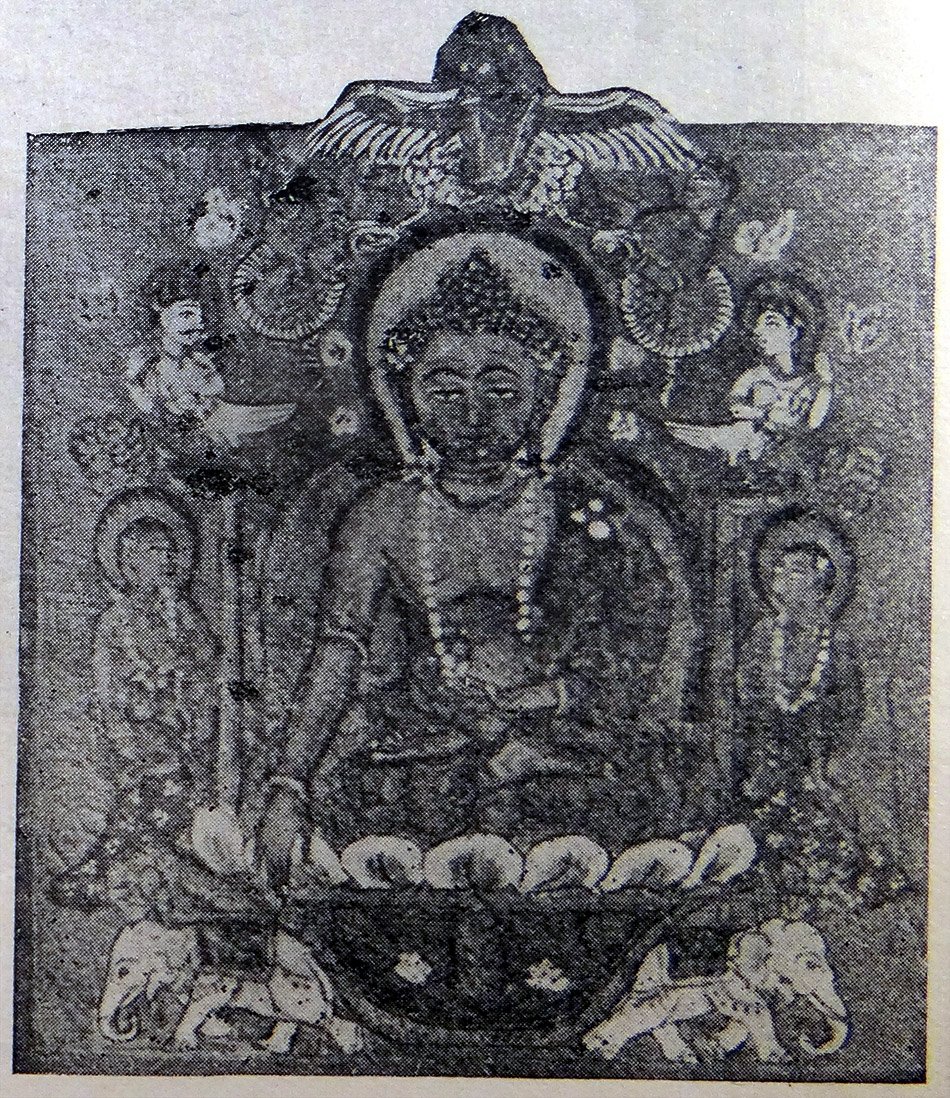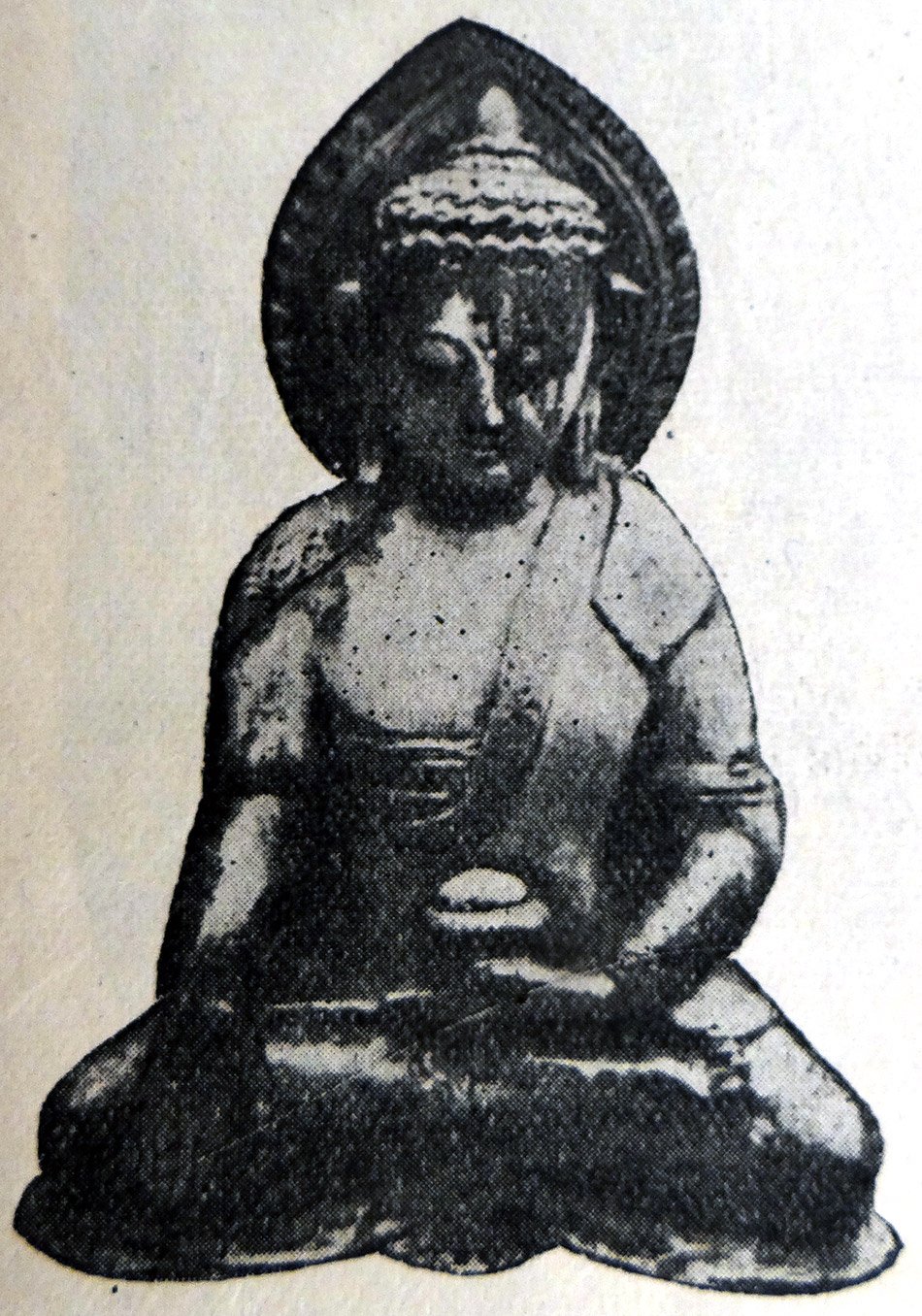The Indian Buddhist Iconography
by Benoytosh Bhattachacharyya | 1958 | 51,392 words | ISBN-10: 8173053138 | ISBN-13: 9788173053139
This page contains an iconography image of Akshobhya and represents figure 22-23 of the book Indian Buddhist Iconography, based on extracts of the Sadhanamala English translation. These plates and illustrations represent either photographs of sculptures or line-drawing reproductions of paintings or other representations of Buddhist artwork.
Figure 22-23 - Akṣobhya
 Figure 22: Akṣobhya |
 Figure 23: Akṣobhya (Nepal) |
Dhyāni Buddha Akṣobhya who is mentioned as a Tathāgata in the smaller recension of the Amitāyus Sūtra which was translated into Chinese between A. D, 384 and 417. Akṣobhya is regarded as the Second Dhyāni Buddha by the Nepalese Buddhists. His description appears almost everywhere in Tantric literature.
Colour: blue;
Symbol: vajra;
Mudrā: bhūsparśa;
Vehicle: elephant;
Images, sculptures, statuettes and paintings of Akṣobhya of this description are to be met with everywhere in Buddhist countries especially of the North. When represented in the Stūpa he always faces the East. His left hand rests on the lap while the right Crests on the right knee with the tips of the fingers touching the ground with palm drawn inwardly. His Vāhana is a pair of elephants and his recognition symbol is the Vajra or the thunderbolt.
Various other forms of Akṣobhya are found in Tantric works, some four-armed, some six-armed, some standing and some sitting, some single and some in Yab-yum. Some two-armed specimens are reproduced here (Figs. 22, 23).
